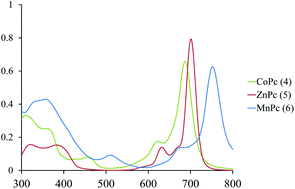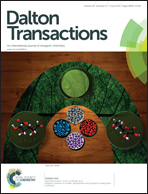Microwave-assisted synthesis of novel non-peripherally substituted metallophthalocyanines and their sensing behaviour for a broad range of Lewis bases†
Abstract
The synthesis of novel, symmetrical, tetrasubstituted metallophthalocyanines (cobalt, zinc, and manganese) bearing four 2-(4-methyl-1,3-thiazol-5-yl)ethoxy units is reported. The new compounds have been characterized using UV-Vis, IR, 1H NMR, 13C NMR, and mass spectroscopy data. Photophysical properties of zinc(II) phthalocyanines were found, including electronic absorption and fluorescence quantum yields. The fluorescence of the complexes was investigated in DMF and it was found that benzoquinone (BQ) was an effective quencher. The response and recovery behaviours of the spin coated films to different analytes, which span a broad range of Lewis bases, have been investigated by means of conductivity measurements. It was observed that the operating temperature had a considerable effect on the gas sensing performance of the sensors investigated. The sensing behaviour of the films for a broad range of Lewis bases and the correlation between the sensor sensitivity and Lewis base enthalpies were investigated. Results show that the sensitivity of the films may be correlated exponentially with the binding enthalpy.


 Please wait while we load your content...
Please wait while we load your content...